Climate Action Is a Matter of National Security, and Business Leaders Can Help
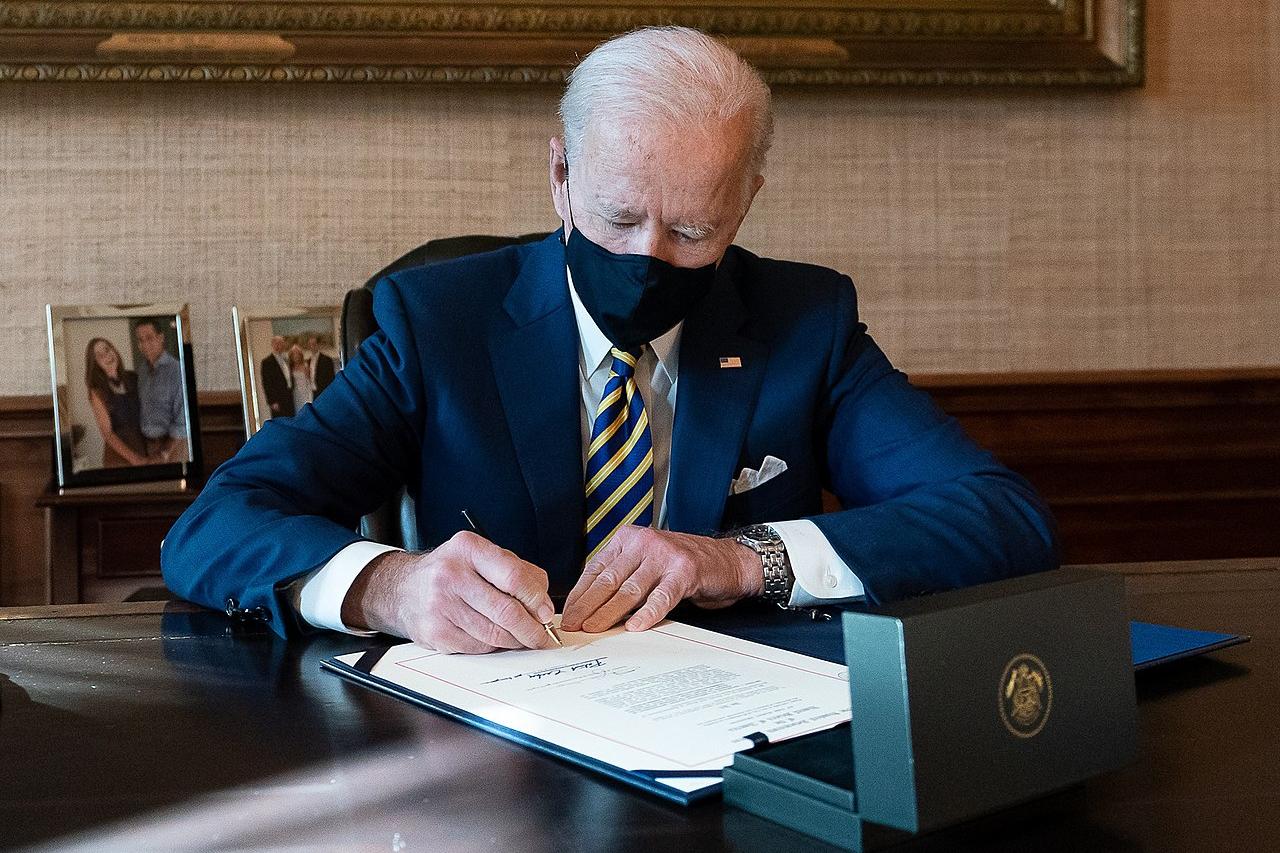
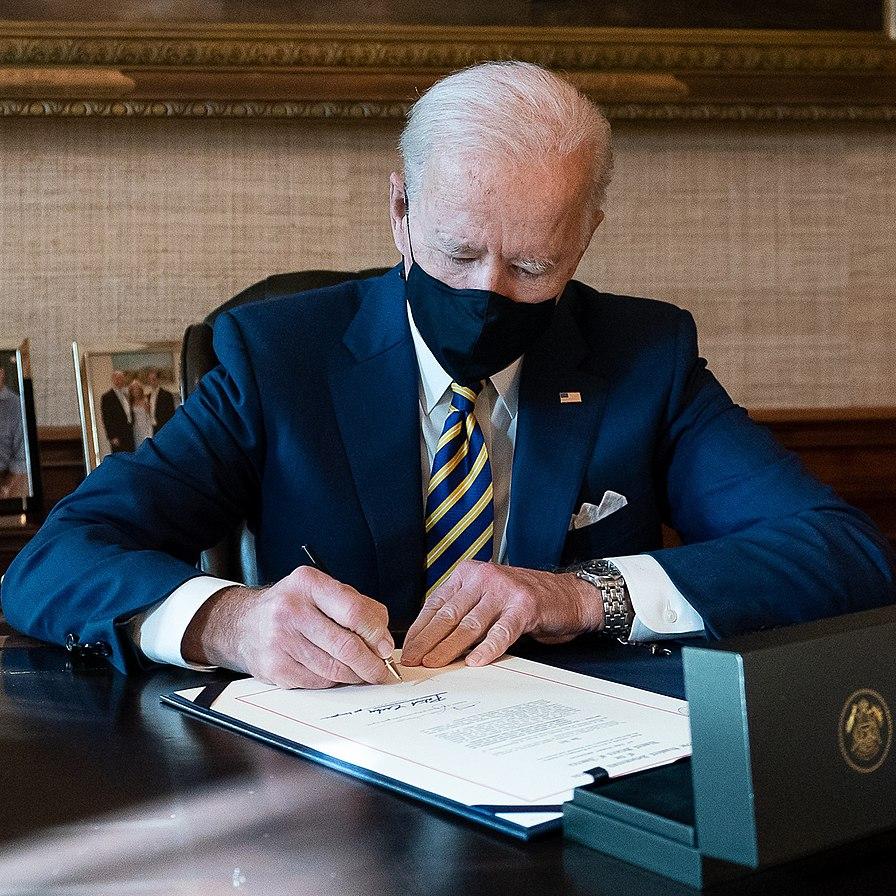
President Joe Biden campaigned for office with a message of healing and unity over political divisions. That may seem like a just another vague, warm-and-fuzzy emotional appeal. However, after just a few days in office the real meaning of his unity message has become crystal clear, especially in the area of climate action. Biden’s support for climate action provides business leaders with a fresh opportunity to cultivate and amplify their decarbonization plans.
No middle ground on climate action
However, although President Biden intended his unity message to resonate, evidently he did not intend it to smooth the way on compromise with fossil energy stakeholders. Far from it. Biden sent a clear signal when he summarily revoked the permit for the notorious Keystone XL tar sands oil pipeline and announced that the U.S. would rejoin the 2015 Paris Agreement on climate change, mere hours after his inauguration ceremony last week.
With these actions, Biden affirmed that his definition of unity means unifying public policy with prevailing public sentiment on matters of fundamental concern, and one of those concerns is climate action.
In case there were any doubts, Biden affirmed his definition of unity last Friday, when he announced more than a dozen appointees to lead various offices in the Department of Energy.
The Biden appointees reflect the growing pool of top talent attracted to environmental and social action. That in and of itself is a signal to corporations that are losing the talent race because their business model does not align with the concerns of a new generation.
The Biden appointees come from climate-aware backgrounds including the Union of Concerned Scientists, the Federation of American Scientists, the America’s Pledge initiative, the administrations of former President Barack Obama and Washington Governor Jay Inslee, and the Center for Law, Energy, and the Environment at Berkeley Law, among many others.
Even the Energy Department’s Office of Fossil Energy will get a makeover, indicating its role in transitioning fossil energy know-how for use in a decarbonized economy. The new Principal Deputy Assistant Secretary and Chief of Staff of the office come to the job with resumes highlighted by experience with the World Resources Institute and the carbon removal group Carbon180.
The Friday announcement came in addition to Biden’s previous nomination of former Michigan Governor and electric vehicle fan Jennifer Granholm as Energy Secretary. Last December Biden also appointed former EPA chief Gina McCarthy as the first-ever National Climate Advisor, which follows on the heels of her one-year stint as President and CEO of the Natural Resources Defense Council.
U.S. Department of Defense is on board with climate action
If there are still any more lingering doubts about the nature of unity under the Biden administration, last week Reuters reported that the President has been preparing another round of climate action orders.
Details are not available as of this writing, but according to Reuters the new round involves an “‘omnibus’” climate change order that kicks off a “‘series of regulatory actions to combat climate change domestically and elevates climate change as a national security priority.’”
The focus on national security is especially interesting from a unity perspective. For many years, “support our troops” sloganeering has engineered and reinforced a partisan political split. By pulling national security into the sphere of climate change, the Biden administration reshapes that slogan into a call for unity on climate action.
That may seem to be a heavy lift, but it is not. The U.S. Department of Defense (DoD) is already fully engaged in climate action as a matter of national security.
DoD took steps to decarbonize during the Obama administration, partly as a matter of logistical and tactical advantage over fossil energy. In 2014 DoD also included climate change as a leading threat to national security in its official Quadrennial Defense Review. Despite the Trump administration’s support for fossil energy, some signs of a bipartisan climate-aware posture on national security nevertheless continued to emerge after the previous president took office in 2017.
Meanwhile, DoD’s purchasing power was an important factor in driving the market for clean energy during the Obama administration, and DoD continued to exercise its supply chain impact throughout the Trump administration. DoD has pushed the market for further developing more renewable energy and innovative technology, supported foundational renewable energy research, and engaged with powerful new financial instruments that accelerate decarbonization.
This is unity: support our troops
DoD also signaled its decarbonization commitment to both presidential candidates in the days leading up to Election Day. At the end of October, the U.S. Air Force articulated the vision of a carbon-negative Department of Defense and issued an open crowdsourced challenge to reach that goal.
This leadership on decarbonization provides U.S. business leaders with a powerful nonpartisan opportunity to engage their employees on climate action — and their clients, customers and communities, too.
After all, many corporate citizens have already amassed an impressive portfolio of engagement activities on environmental issues as well as support for veterans and active duty military. If decarbonization is a matter of national security, then unifying the public on climate action shouldn’t be too much of a stretch.
Image credit: The White House/Wiki Commons
Six Ways the Middle East Can Help Build a More Sustainable Global Economy


Like many global events and conferences, the marquee sustainability gathering in the Middle East, Abu Dhabi Sustainability Week (ADSW), had to scale back its plans as it went virtual last week. Nevertheless, the week-long event promised new developments on renewables, sustainable development, youth engagement and food security.
Naming the Gulf region and sustainability in the same sentence may seem counterintuitive. After all, this is region beset with a harsh climate, lacks few resources other than oil and gas and is home to countless temples of consumerism and excess – monstrous shopping malls, one of which in Dubai is home to a ski slope. But as last week's virtual event in Abu Dhabi shows, countless opportunities leading to a more responsible, low-carbon economy could be on the horizon.
A new Middle East?
There is growing awareness across the Gulf and that planning for a future economy not based on oil revenues is the reality; and to their credit, some of the region's leaders have harnessed their oil largess for positive change – as in education, philanthropy and foreign aid – rather than simply squandering it.
On that point, there are several challenges on which this region can play a key role or even lead. Some of the following six issues lend themselves to the Middle East’s geopolitical realities – others, such as technology investment, show long-term strategic thinking of a future not based on fossil fuels.
Desalination that’s far less energy intensive
Here’s one thing the UAE and Israel have in common, other than the normalization of diplomatic relations: both countries are also both desalination superpowers. While both nations’ prowess on this technology is impressive, there is a downside: the massive amount of energy that’s needed to turn seawater into freshwater.
One desalination pilot project based between the cities of Abu Dhabi and Dubai, however, shows promise. Five test desalinations plants operated in the small town of Ghantoot to see whether low-cost, energy-efficient desalination technology could ever scale up. The result, a process that uses solar-powered reverse osmosis, may have the potential to combat water scarcity in the near future.

Food security
Over a decade ago, wealthier Gulf Cooperation Council (GCC) states were locked in a race to invest in lands across regions such as Sub-Saharan Africa and Latin America in order to secure their long-term food security. Critics accused those nations of accelerating a worldwide “land grab” that would bolster rich Middle East nations at the expense of far poorer citizens. Governments within the Gulf region responded that such strategies were necessary to reduce dependence on pricey imports and food subsidies. The pandemic has revived those fears, as agriculture generates little economic activity in any of these countries – no more than 2.5 percent, in fact.
These same GCC governments have been coy about how these land investments will factor into their long-term food security strategies; and in a large part, they’ve been able to stay silent because of how global agriculture at a macro level is currently performing. Despite water scarcity, climate change and shocks related to the global pandemic, the world has been able to produce far more food than in did during the last global economic crisis. Impressive yields for now shouldn’t nudge the Middle East toward complacency, however.
The punishing Middle Eastern climate actually is an opportunity for the region to lead the world on innovations in agriculture. Finding ways to harness seawater for agriculture purposes, such as past projects in Jordan, Qatar and the UAE, have a chance to become another tool in the Middle East’s foreign aid strategy – one that’s been severely tested due to the global COVID outbreak.
Green hydrogen
In the United Arab Emirates, Abu Dhabi is exploring green hydrogen opportunities through the renewable energy company, Masdar, and its eponymous urban innovation center on the outskirts of the country’s capital. This strategy builds upon Masdar’s track record of funding wind and solar projects within and outside the UAE to meet the demand for clean power across the globe. Plans call for a demonstration-scale green hydrogen plant at Masdar City to produce fuel for ground transportation, shipping and aircraft.
Investing in renewables worldwide
Over the past decade, Masdar has been investing in wind and solar power developments to meet skyrocketing demand for clean power across the Middle East region, including projects in Egypt, Jordan, Morocco and Oman. But the company’s portfolio stretches far beyond North Africa and the Middle East, with similar projects in Pacific island states, the Indian Ocean and Sub-Saharan Africa. The company has long been able to hire both local and expat expertise, with smaller nations benefitting as a result.
Last year, Abu Dhabi announced what it said could become the world’s largest solar power installation, a 2-gigawatt plant slated for completion next year 20 miles outside the city center.
An hour’s flight away, similar efforts are going on in Qatar, with the country’s sovereign wealth fund announcing a recent joint venture partnership with Enel Green Power to explore opportunities to invest in renewables projects across Sub-Saharan Africa.
Smart cities and sustainable design
One argument about the importance of Masdar City is that if sustainable building designs can work in a region where summer temperatures on average hover around 110°F (43°C) in the summer, well, they can thrive anywhere. Though Masdar had to roll back many of its ambitious plans a decade ago (largely because Abu Dhabi had little choice but to throw Dubai a financial lifeline during the 2008-2009 global financial crisis), new projects keep emerging outside the development’s original core.
Leaders in the global real estate sector who see the value in more responsibly built developments may want to take notes from the recent launch of Masdar Green REIT, which the company says is the UAE’s first sustainable real estate investment trust.
There’s another project real estate professionals should keep their eyes on: an $82 million mixed-use development that heralds itself as the “world’s most sustainable mall” that opened last year.
Technology that’s equitable and accessible for all
New technologies such as artificial intelligence (AI) have been among the hottest sectors to emerge worldwide, but with such advancements come concerns about bias and ethics. A new AI university and research center in Abu Dhabi's Masdar City could help level the playing field, allowing for AI to work for all citizens instead of discriminating against them. That effort builds on a $300 million fund an Abu Dhabi holding company launched in its drive to attract more startups to Masdar City, where several hundred are already based – offering entrepreneurs an opportunity to launch their business ideas with minimal red tape.
Image credit of Abu Dhabi, UAE: Leon Kaye
Leading U.S. Energy Buyers Support National Unity - On Clean Power, That Is


In the aftermath of the failed insurrection of January 6, Republican leaders have rallied around the idea that the nation must unify. As a matter of fact, the nation is already unified - only not around policies typically associated with the Republican brand. Clean power, for example, is an area in which unity has been emerging among business leaders as well as the general public, contrary to Republican policies that favor fossil fuels. In the latest development, some of the largest corporate clean power buyers in the U.S. have called upon President Joe Biden to prioritize the transition to a zero-carbon energy system.
Clean power and corporate unity
The latest push for clean power follows a five-year period of organized action by leading corporate energy buyers, highlighted by a strong show of unity around the signing of the Paris Agreement on climate change in 2015.
In the run-up to the signing, 81 top U.S. corporations joined President Obama’s “American Business Act On Climate Pledge.” They also backed up their words with action. Even though the cost of clean power was still relatively high at the time, corporate buyers snapped up utility-scale wind and solar farms at a record-setting pace.
Fossil energy stakeholders and their allies pushed back, but the momentum continued to grow even after 2017, when former President Trump pulled the U.S. out of the Paris Agreement. The nonprofit organization America’s Pledge and the We Are Still In coalition were among the groups building unity on clean power across the board, including state and local governments as well as businesses, schools, nonprofits, and other entities.
Somewhat ironically, individual federal agencies also continued to support clean power stakeholders all throughout Trump’s term in office, including the Department of Defense, the Department of Energy, and the Department of Agriculture. Even the Environmental Protection Agency contributed to such efforts through its ongoing Green Power Partnership program.
Last fall, America’s Pledge toted up the progress on clean power. They noted that only the state of Hawaii and 33 cities had 100 percent clean energy commitments in 2017. In the three years since then, the number jumped to 13 states, Puerto Rico, and 165 cities. One-third of all people in the U.S. now live in a 100 percent clean-committed jurisdiction.
America’s Pledge also reported that the unified effort kept a national 2050 decarbonization goal within reach. However, they warned that strong federal climate policies were needed to keep the effort to shift toward clean power on track.
Accelerating action on climate change
The think tank Rocky Mountain Institute can take a good deal of credit for unifying corporate energy buyers in support of clean power, partly through REBA, the Renewable Energy Buyers Alliance.
As one measure of the impact, in just two years one REBA member, McDonalds, was able to grow its position on the organization’s clean power tracker from practically zero to a place in the top 10 for utility-scale renewable energy purchases.
Another high-impact REBA member is General Motors. The automaker has been flexing its purchasing muscle to support renewable energy for all rate payers across the board, in support of its planned transition to electric vehicles.

A new call for national unity
During the time leading to last fall's Election Day, REBA proposed a slate of reforms for wholesale energy markets that would accelerate wind and solar adoption.
Now the organization has upped the ante. In a new, first-of-its-kind public policy effort, REBA is calling for specific federal policy actions that support innovation and universal grid decarbonization, in addition to wholesale market reform.
Almost three dozen top brands and global companies operating in the U.S. have already signed on to the new REBA call for action, including Adobe, Amazon, Honda, the sustainable packaging firm Ardagh Group, Atlassian, Cargill, Danone, DSM, the data center firm Equinix, Facebook, GM, Google, Johnson & Johnson, the building materials firm LafargeHolcim, McDonalds, Micron Technology, Microsoft, Nestlé, Novozymes, PepsiCo, Ralph Lauren, Sabey Data Centers, the building products company Saint-Gobain, Salesforce, Target, Clorox, Disney, Unilever, the software firm VMware, Walmart, WeWork, Workday and Yum! Brands.
Unity on wholesale markets, technology, and innovation
Reform of wholesale energy markets would have a profound impact on decarbonization. As explained by Bryn Baker, REBA Policy Director, wholesale markets save energy customers billions of dollars annually. In addition, wholesale markets already serve two-thirds of U.S. customers.
Among other benefits, wholesale market reform and expansion would provide more customers with opportunities to deploy virtual Power Purchase Agreements, which have emerged as a powerful financial tool for corporations transitioning to clean power.
In the area of innovation, Baker notes that REBA members have demonstrated a keen interest in energy-related technologies over and above wind and solar power. That includes established pathways such as energy storage, energy efficiency in buildings, and reducing emissions from existing assets.
"Large energy buyers are creating a ‘demand pull’ for innovative technologies that often experience financing challenges and demonstration barriers,” Baker explains, citing green hydrogen and green ammonia among other next-generation technologies that will play a future role in decarbonization.
“With more federal R&D funding to help move those technologies through the innovation ecosystem and to support the demonstration of those projects, we'll see more large energy buyers be able to leverage and test those technologies,” Baker says.
National unity on the science of climate change
President Biden is himself an expression of national unity on climate change. He ran on a thoroughgoing science-based platform with a strong plank for climate action, and he won office by a wide margin in both the popular and Electoral College votes.
The voter unity on climate science is mirrored by corporate interest in the international Science-Based Targets initiative for climate action, which aims to keep global warming within the 1.5 degrees centigrade limit established by research.
Despite the momentum for change, significant policy barriers still hold sway, says Miranda Ballentine, CEO of REBA. She emphasizes the importance of creating science-based federal policies that remove obstacles for both corporate energy buyers and individual rate payers.
“Federal actions enable greening the grid for all customers, regardless of whether they can act independently or not to choose green energy,” Ballentine says.
Ballentine also notes that some corporations already have a running start, with more than 1,000 companies already involved in the science-based goal.
“So business leaders have fortunately been committed to climate science since before the Biden Administration,” she says. “What accelerated federal leadership will do is enable businesses that are already committed to decarbonization to take faster and cheaper action.”
Public unity on climate action
Ballentine cites Microsoft and Walmart as two companies that have committed to beating the 2050 decarbonization timeline by a wide margin. There are many more, and they have the weight of public opinion behind them.
Despite a decades-long disinformation campaign by fossil stakeholders and their allies, the latest data from Yale University’s program on Climate Change Communication reveal a strong majority consensus on climate change and climate science, highlighted by 86 percent support for funding that supports clean power research.
There is no question that business leaders are on firm ground in the area of clean power. From that perspective, the fallout from the January 6 insurrection could help cut through the disinformation on climate change and amplify the corporate voice in support of decarbonization.
In the wake of the violence, corporate leaders have coalesced around the idea that sedition is a bad thing. Some have cut donations to 147 Republican members of Congress who supported former President Trump’s efforts to overthrow the U.S. government. Some, such as IBM, are also pushing for more long lasting reforms that restore trust in government.
The overall impact is to unify around the idea that the Republican party, in its current form, is dangerous to the common good and irrelevant to serious debate on matters of national public policy.
The Republican party didn’t only drop the ball on climate change. Racial justice, immigration, gun safety, and LGBTQ rights are among the many areas in which the business community has lent its voice to the mainstream of public opinion, regardless of the Republicans’ policies.
If that doesn’t count as unity, what does?
Image credit: Pexels
Collaboration is Key to Scaling Regenerative Agriculture
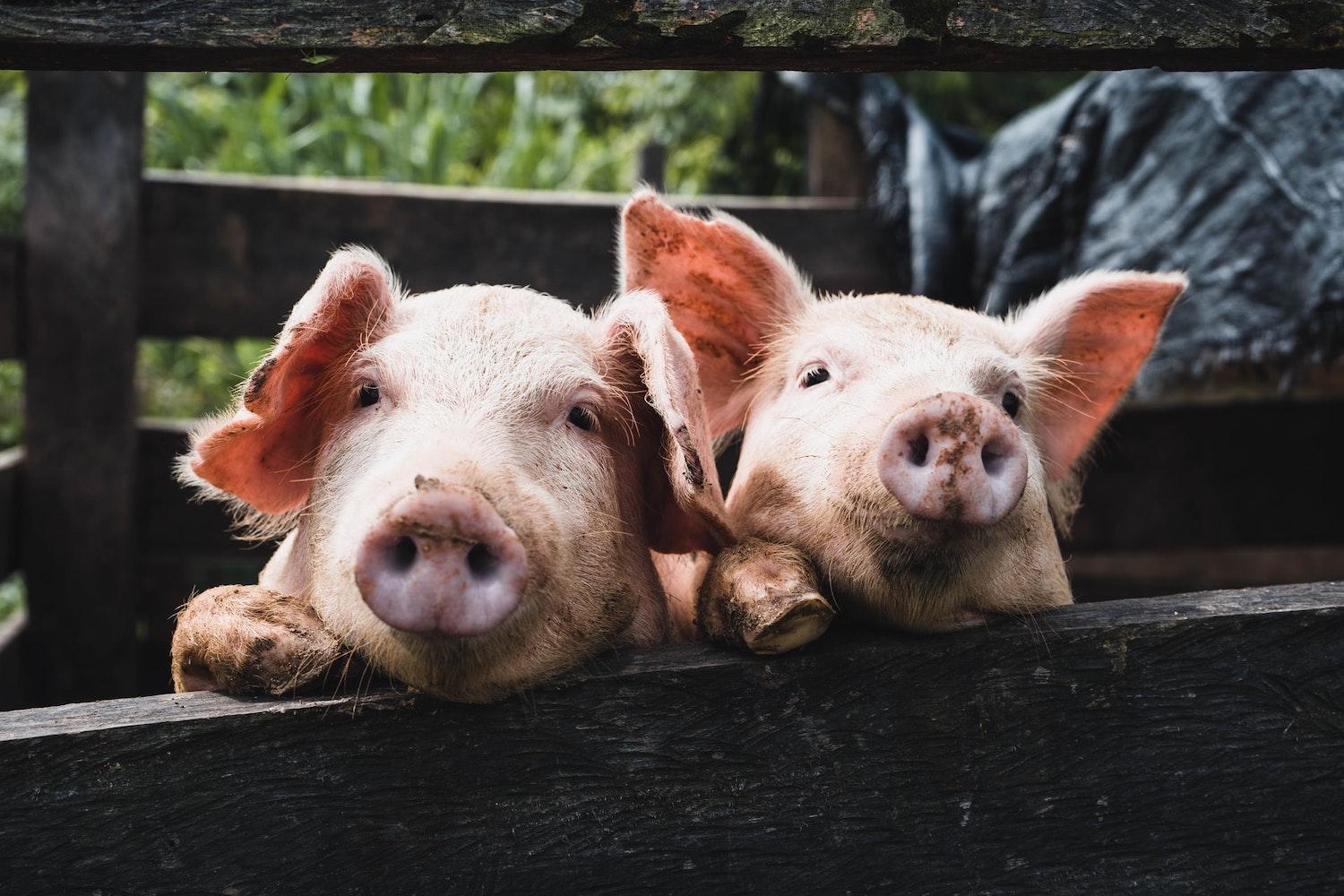
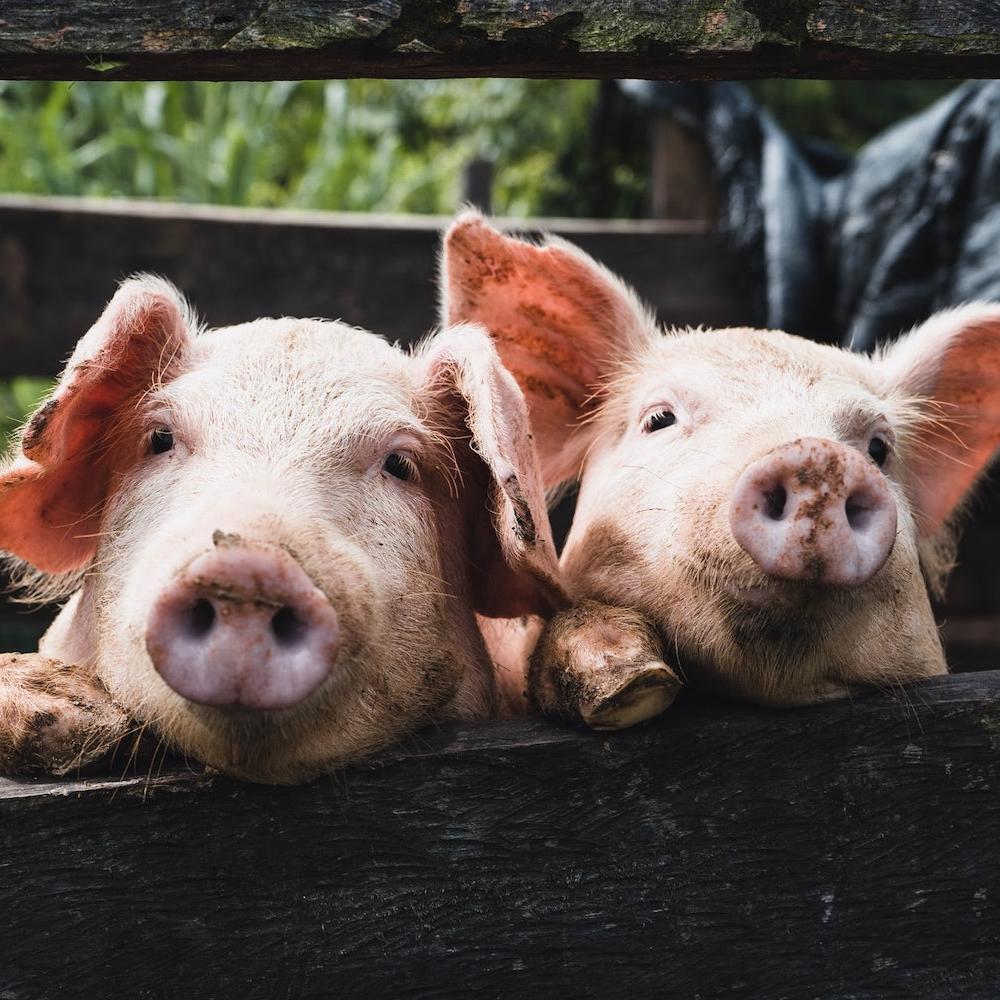
It’s been almost a year since grocery shelves around the world emptied as coronavirus hit the news. These large-scale — and in some cases long-term — shortages revealed vulnerabilities in our centralized food systems and globalized supply chains. Gaining popularity in recent years, regenerative agriculture is one method that has the potential to increase food security by improving the health of the land and localizing food production. Practices such as integrating livestock, planting cover crops, foregoing tilling, and increasing crop diversity aim to restore soil organic matter and soil health, thus producing more nutritious food and sequestering more carbon from the atmosphere.
While regenerative agriculture can (and should) look different for every farm, locality and crop, it has a consistent principle of circularity: reducing losses where possible and restoring them to the soil, be it nutrients, water or carbon. The ultimate goal, after all, is to cut the environmental impacts of farming and raising livestock, such as greenhouse gas emissions, soil erosion and water pollution. Part of this circular food economy often includes producing and supplying food regionally.
Lessons from collaboration: It’s the way we raise meat that matters
Like so many others, the meat industry has faced its share of supply chain hurdles this year. Some companies closed processing plants where workers had tested positive for COVID-19, all while consumer demand increased by 43 percent between March and April, compared to the same period last year.
Gaining greater stability in the face of crisis is just one reason brands like the natural and organic meat label Applegate are embracing regenerative agriculture. In the first quarter of 2021, the company will launch a sub-brand called The New Food Collective that uses pasture-raised meats and small-batch production methods. This unique line of pork products is set to be released this spring on Amazon Fresh.
Applegate’s long-term goal is for all its products to be sourced from farms that are actively working to regenerate the land. The company, which is part of the Hormel Foods family of brands, has partnered with the Savory Institute to facilitate necessary progress on the ground. Savory has been pioneering regenerative techniques since the 1960s and supporting farms in improving soil quality with measurable impacts.
For a brand whose mission is to “change the meat we eat,” regenerative agriculture is a big pull for Applegate, especially considering that livestock currently accounts for 14.5 percent of total global greenhouse gas emissions, and agriculture uses half of all habitable land — 77 percent of which is used to raise livestock.
In conventional agriculture scenarios, livestock also use vast amounts of water (one pound of pork requires an input of 576 gallons of water, for example). Animal agriculture can also pollute water with nitrogen and phosphorus from byproducts and cause soil erosion due to overgrazing.
Pigs fertilize, turn soil and increase plant productivity
Harmful patterns and consequences begin to fall away when farmers introduce regenerative practices. “There's a way of raising animals that's actually good for the climate and good for the environment, and that's with regenerative agricultural practices,” Gina Asoudegan, Applegate’s vice president of mission and innovation, told TriplePundit. “This idea that meat can actually be good for the planet is obviously something we think we can have a big part in, and we can lead in that direction.”
The Savory Institute describes regenerative techniques as "Holistic Management." It sees livestock as an integral part of the holistic system, especially if animals are raised in a way that models the behavior of wild herds. Savory trains farmers in this balanced integration within 46 hubs across the Americas, Europe, Asia, Africa and Oceania. Farms become certified via the rigorous, years-long Ecological Outcome Verification (EOV) program and ultimately join the Land to Market label, of which Applegate is a founding member.
“After farms are verified, our Land to Market program picks up from the farm gate forward to ensure the integrity and authenticity of that positive outcome is maintained through the value chain,” Chris Kerston, chief commercial officer of Land to Market at Savory, told TriplePundit in an email.
For example, the role Applegate’s pigs play in regeneration are in grazing, tilling the ground and fertilizing. Living outside, the animals help plants sequester more carbon by grazing, and also break up dead vegetation, bury seeds, and create areas for water to collect as they walk and dig. With Savory’s tried and tested methods, animals don’t become a hinderance to environmental progress but a key part of a healthy agricultural ecosystem.
Scaling regenerative agriculture through replication
Furthering these practices is not exactly about scaling, but rather replicating the system that Asoudegan says Applegate intends to encourage. Kerston of Savory noted that this leadership pays off: “Brands that move early on these regenerative initiatives will garner the early wins, attract new market share, build loyalty, and in many cases be asked to help define future compliance regulations that are emerging as governments around the world scramble to show headway toward their environmental commitments,” he told us.
Applegate is finding that its progress is dependent on collaboration amongst the like-minded — farmers, retailers and fellow companies working together to create a better food system — something that Savory helps to facilitate.
This type of collaboration goes beyond the food supply chain. Making use of every output from regenerative farms allow farmers to earn more income, providing return on the initial investment required to transition to a regenerative system. This means participation from companies in other industries — which can use these outputs for their products — can help scale these systems further.
For example, fellow Savory Institute partner Timberland recently released its first boot line made with leather from regenerative farms that incorporate animal agriculture. Pet companies can also use offal, or offcuts, to improve circularity. This “collaborative utilization,” as Asoudegan calls it, also allows each company to offer its products for a lower price. But affordability isn’t the only benefit to the customer: Animals grown on healthier pastures produce healthier and tastier food, and a more secure food supply chain benefits everyone.
Trailblazers like Applegate, Timberland and others are shining the first gleams of possibility for this new regenerative agriculture economy. Effective replication will require a collective, though, Asoudegan said, adding: “It's really going to involve new levels of collaboration in order to bring this new system into reality.”
This article series is sponsored by Hormel Foods and produced by the TriplePundit editorial team.
Image credit: Kenneth Schipper Vera/Unsplash
Why It’s Time to Rethink the Software Loop
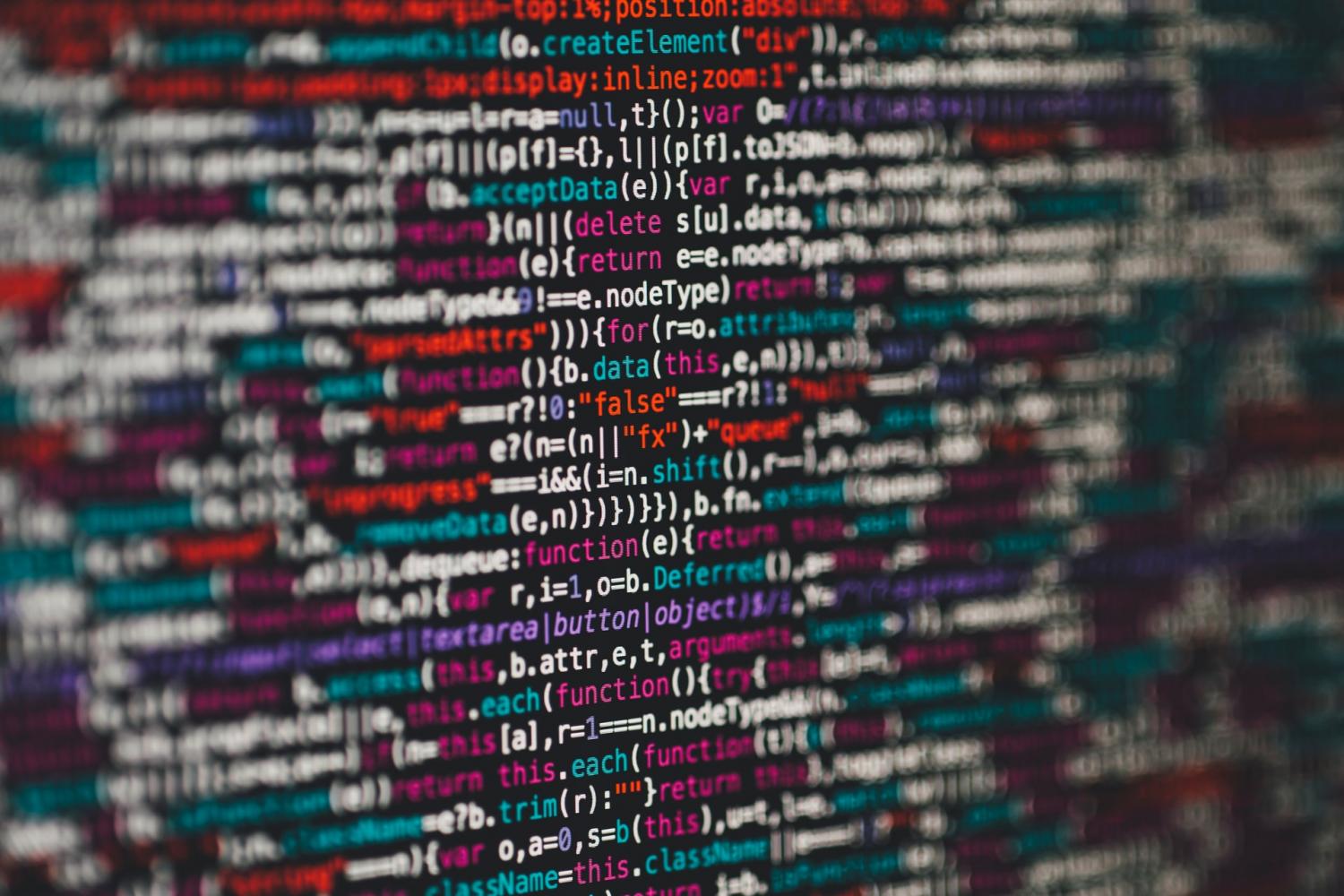
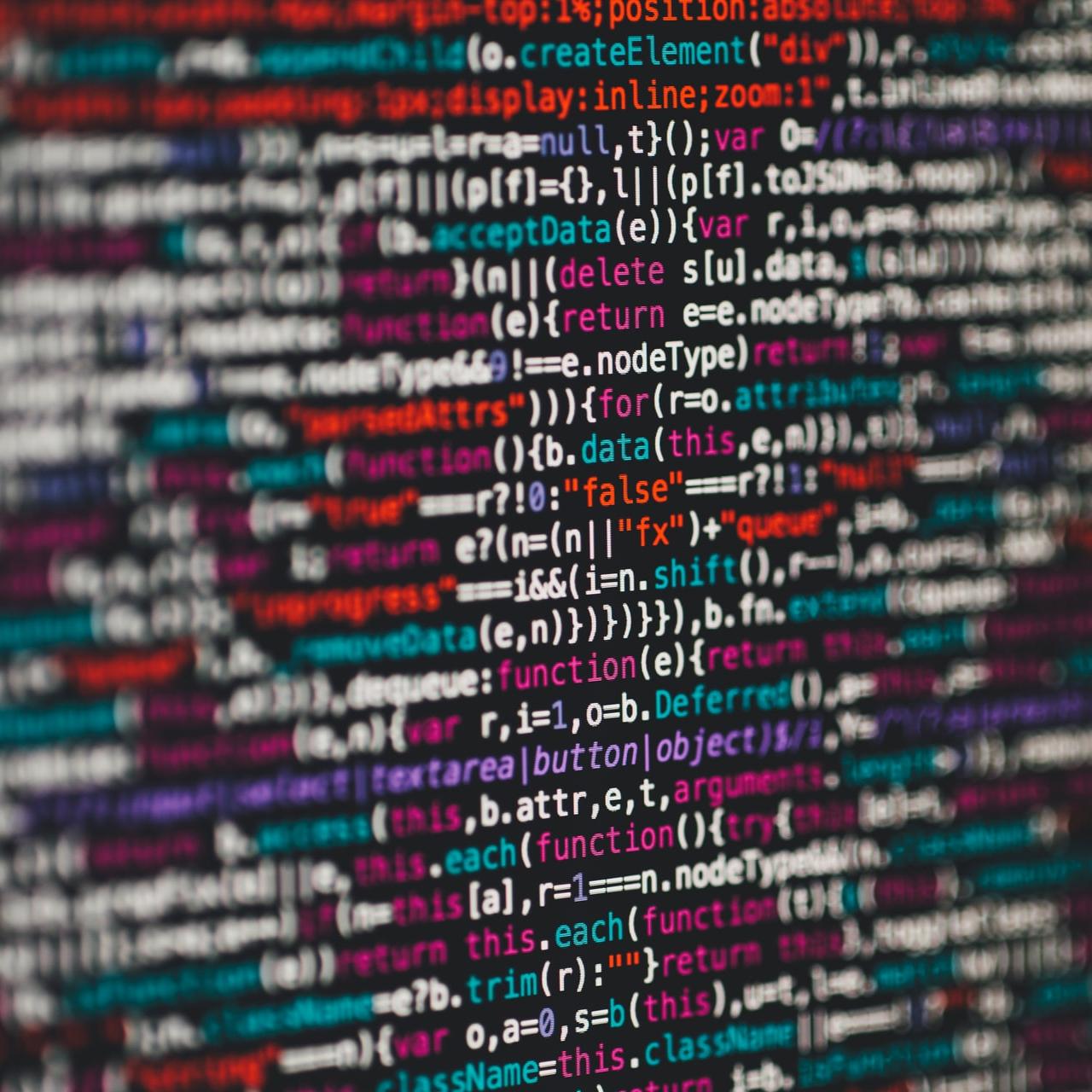
Software as it is designed rules our lives. It is integrated into our daily experience in ways that are both profound and concerning. And why is that? Much of it is because of one of the most important fundamentals in software design – the software loop.
This single design element rules our entire software experience, from algorithms that power campaigns to the user experience that moves us from a homepage on a website to a product “buy” button.
A simple software design function has led to chaos – here’s why
This simple function has led to consequential results: we are beginning to resemble blocks of code - tagged, categorized and compressed for the purpose of enriching companies and grifters alike, and maintaining the status quo. At any moment, an advertiser can pull up millions of code blocks and influence their movement, whether to purchase a product, click on a headline, or watch a conspiracy theory video about pizza and pedophiles.
We may not notice the change in our behavior until it has had other effects: doom scrolling for hours on Instagram or Twitter, shouting on Facebook about “Stop the Steal” or believing that COVID-19 originated in a Chinese lab.
Of course, advertisers are exploiting a kernel of fear or bigotry in each situation. There is ample evidence that American society has put little stock in valuing all of us, over a select few, and an ideology and practice of white supremacy that has propped up all manner of entitlement and violence for some time.
However, in order for these beliefs to surface and behaviors to grow, people must feel a part of a greater mass participating in those same beliefs and behavior.
The never-ending deluge of advertising and shouting about the November election that we’ve experienced over the last few years is only possible because of software design — the ability to group like actions and like profiles together to such precision and at such scale that finding and creating new converts (upon which advertisers’ profits and grifters’ political careers depend) becomes as easy as 1-2-3.
It’s time to take a step back from the software loop
The software loop is a programming function that iterates a statement or condition based on specified boundaries. A person clicks links, views ads or explores products on Amazon, and their choices are fed back into the same loop. The process is both one-sided and never-ending, as John Maeda, author of How to Speak Machine notes, “Computers never get tired, and the loop can go on forever.” The person is being ‘processed’ through the logic of the loop, which checks their choices against predetermined boundaries: ‘did the user choose step a or b, if they chose step a, process them to step c.’
As the software loop pares down choices for the user, they are served increasingly narrow options and then spun into new loops where the process begins again.
But while some of us may know advertisers and their goals are driving our digital experience and approach the internet accordingly, lots of our neighbors don’t. They truly believe they’re making their own choices - that the information they find is true and they want what they’re buying. There’s some truth there, but it isn’t the whole truth.
How can software design change for the better?
Zhenzhen Qi and Yang Wang, creative technologists and co-founders of zzyw collective, point out that every single person most desires to be human, despite their choices or traumas. And the deepest human impulse is creativity, yet that has been removed from our experience of software and technology. Wang notes that, “If we look at the history of the design language of computing from the 1940s to today, upon which AI is based, it has overwhelmingly leaned toward designing for precision at the expense of caring for ambiguity, which is a necessary condition of creative expression.”
Continuing to accept the software loop as the organizing principle of software design and excluding ambiguity from software design means we will end up in grave danger. Qi explains how this happens, “Almost always the goal is to isolate a person until they are easily looped because of an emotional, psychological or other kind of need. For example, maximizing political division translates into maximizing profits for media companies, and maximizing confusion introduces distrust and division. That in turn, sorts people into certain categories and amplifies specific feelings, like anger or pleasure, which then translates into maximizing profits for a whole range of organizations, while hiding the controlling algorithms.”
Well, that resonates. Of course, the problem with being hoodwinked, is that most people struggle to accept they were hoodwinked.
It is both embarrassing and destabilizing to acknowledge having been a mark and often we’d rather cling to the con than call it out. Which begs the question: how does this software design problem get solved?
It is necessary that we recognize that profits alone have driven technology development, and they have a negative effect on people’s well-being.
Software design isn’t a superfluous act. Its impact is present in every sector of our society. If we understand anything about designing technology, it must be to reject organizing principles, like “Don’t make me think” and design elements like the loop that reduce us to our monetary value to already wealthy billionaires, in favor of equitable principles, like justice, equality and that fundamental humanness, our creative impulse.
Image credit: Markus Spiske/Unsplash
WEF to Global Business Community: Decarbonize Your Supply Chains


Everyone has an idea on how we can avoid a global collision course with unchecked climate change, but such change will require far more than last week’s big news here in the U.S. Even though the country’s 45th president has left office, there’s still plenty of work that lies ahead on the climate action front if we will limit global warming to 2°C and avoid disaster. True, there is talk about renewables investments, developing cleaner sources of fuel and energy efficiency; but in the end, it’s all about the supply chains, says one well-known international NGO and convener of global leaders.
According to the World Economic Forum (WEF), it’s the decarbonizing of those supply chains that could prove to be the “game changer.” In new research it recently completed in a partnership with Boston Consulting Group (BCG), WEF acknowledges that decarbonizing companies’ supply chains is “hard.” Nevertheless, the report’s authors insist such a climate action strategy would be more effective than simply focusing on companies’ operations or addressing inefficiencies in power and fuel consumption.
WEF points to eight global supply chains that it concluded accounts for more than 50 percent of the world’s greenhouse gas emissions. The industries with these carbon intensive supply chains shouldn't be surprising: they include cars, clothing, construction, electronics, fast-moving consumer goods, food, freight and professional services.
Among those industries, from WEF’s point of view, the industries dominated by consumer-facing companies share one thing in common - their direct emissions from their operations and manufacturing pale in comparison to the total emissions their supply chains (often called Scope 3, or “indirect” emissions) keep generating.
“Supply chain decarbonization will be a ‘game changer’ for the impact of corporate climate action,” said Nigel Topping, of the UNFCCC in a public statement. “Addressing Scope 3 emissions is fundamental for companies to realize credible climate change commitments.”
The WEF-BCG report arrives in the wake of more companies saying they will find ways to tackle their Scope 3 emissions, which include brands such as ExxonMobil, Kimberly-Clark and PepsiCo.
While tackling those pesky supply chain emissions is a difficult task, WEF believes the costs involved are actually minimal. The study’s authors say that about 40 percent of the emissions in those aforementioned global supply chains can be curbed with measures such as circularity, material and process efficiency as well as a shift toward renewables – and that any costs passed onto consumers would result in no more than a 4 percent increase in price.
“Many of these levers are readily available today – with very affordable or even positive economics,” the WEF report noted. “Increasing material and process efficiency often results in cost savings with comparably short payback times, even in jurisdictions that do not levy a price on carbon.”
As for those eight resource-intensive industries, WEF makes it clear a cookie cutter approach won’t work. Take clothing, for example: it’s hardly a surprise that the report concluded less than 2 percent of all of its emissions can be reduced by recycling – but 45 percent of the emissions tied to the worldwide fashion industry are traced to the fact that much of the world’s garment production occurs in regions where fossil-based fuels like coal are dominant.
On the other hand, it shouldn’t be a surprise that within the fast-moving consumer goods sector, improved circularity and a boost in process efficiency could together account for a 40 percent reduction in emissions.
No matter what the industry, one commonality is that companies need to reset the relationships they have with their suppliers.
“Companies aiming to decarbonize their supply chains need to change the way they operate,” concluded the report. “They require more comprehensive data exchange with suppliers and need to set up an organization capable of engaging them on their carbon emissions, as well as integrating emissions into procurement standards and decisions.”
Image credit: Clayton Cardinalli/Unsplash
Any Biden Climate Action Plan Must Focus on Renewables


President Joe Biden has given every indication that his administration will take climate action seriously. And a majority of voting Americans agree with that, especially when it comes to advancing clean energy goals, according to a recent survey from the Yale Program on Climate Change Communication and the George Mason University Center for Climate Change Communication.
While 53 percent of those surveyed felt that climate change should be a high or very high priority for the Biden administration, 66 percent supported developing clean energy sources. Digging a little deeper shows even greater support: 83 percent support creating jobs programs to help unemployed workers from fossil fuel sectors, 82 percent support funding more clean energy research, and 72 percent want the U.S. to transition its economy to 100 percent clean energy by 2050, one of the cornerstones of President Biden’s climate plan.
How some U.S. states have already hit the ground running on climate action
Clean energy has long been an easier sell in certain corners even than other forms of climate action. Two of the top states for renewable energy are Texas and North Carolina. North Carolina ranks second in the U.S., after California, for installed solar generating capacity. Texas, despite being the oil and gas capital of the country, leads in the nation in both installed and under-construction wind generating capacity. In Texas, the wind boom took off when the state created a targeted renewable portfolio standard in 1999, one of the earliest ones in the U.S. The state blew past its initial modest capacity goal and has continued to grow since, accounting for 18 percent of the state’s electricity generated in 2019.
Renewable energy has been a boon for the states that have encouraged and supported it. About 113,000 people are employed in the renewable energy sector in North Carolina, which added another 1,800 jobs in 2019. Texas had about 254,000 people working in renewable energy in 2019. While the COVID-19 pandemic has hit the renewable energy sector hard, as with the case of many other sectors, jobs are expected to rebound once the Biden Administration’s policies begin to take effect and the pandemic (eventually) recedes.
Further, in addition to the well-documented benefits to air quality from renewable energy, technologies such as wind and solar create market opportunities for both businesses and community development efforts. Most renewable energy sources are also no- or low-water, so they are better able to preserve water supplies for other uses like municipal and agricultural needs.
In states like Texas, as well as developing a more diverse energy portfolio, renewables can also help diversify local economies. The state has long been dependent on oil and gas revenue to fill its coffers. New streams of revenues can allow for less volatility in public finances and more opportunities for boosting private investment with public investment.
What a new plan to tackle climate change will look like
Even in a low-regulation state like Texas, the renewable energy portfolio standard enacted by the state’s legislature enabled the wind market to grow and thrive in Texas. Regulations create market certainty that, if done well, foster private investment and development. Effective regulations should also consider the needs of affected communities, both in terms of job loss or creation and air quality and other health benefits. More than ever, policies must be crafted in a way to address past deficiencies or injustices and lay the groundwork for innovation and investment in the context of climate action.
On Thursday, The Department of Energy (DOE) announced its new leadership team, comprised of highly-qualified engineers, lawyers, and policy experts on issues such as energy jobs, energy justice, and public engagement. DOE is a technical agency, which oversees several national labs across the country. Policy formulation related to climate action will require partnerships with state, local, and tribal governments and with industry in order to be effective.
But climate action plans and renewable energy investments require more than technical solutions. In order to address climate change and engage industry and communities successfully, the solutions must be integrated throughout the government, not siloed into one agency. Right now, it appears that is the goal of the new administration.
It’s all about embedding and integrating
Climate goals and solutions must be embedded and integrated throughout agency budgets and regulations in order to be effective. To that end, Treasury Secretary nominee Janet Yellen hopes to establish a climate hub in her Treasury Department, and the Department of Agriculture has announced a new senior climate advisor position. Much like in a corporation, sustainability efforts are most effective when they are part of the operations instead of a standalone initiative; hence the same approach toward climate action must be the same in the federal government if it will be set up for success.
The Biden administration has signaled that has plans to embark on climate action seriously. The sentiment is already there: Clean energy is a central solution to any climate change plan and is already supported by a majority of Americans. Emphasizing the economic benefits and opportunities of investing in clean energy could help bring more people to the table.
Solving the climate crisis will require everyone to take action, and well-crafted policies are the first step to spurring innovation and investment in sustainable solutions.
Image credit: PxHere
UAE Invests in Green Hydrogen for Zero-Emission Aircraft
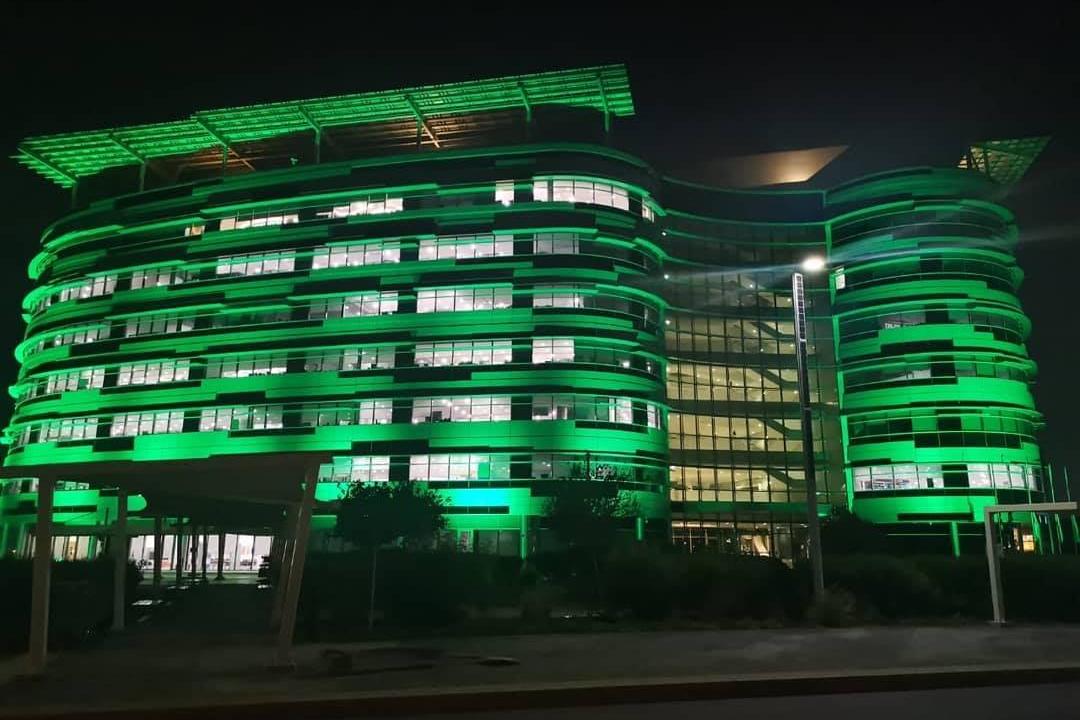
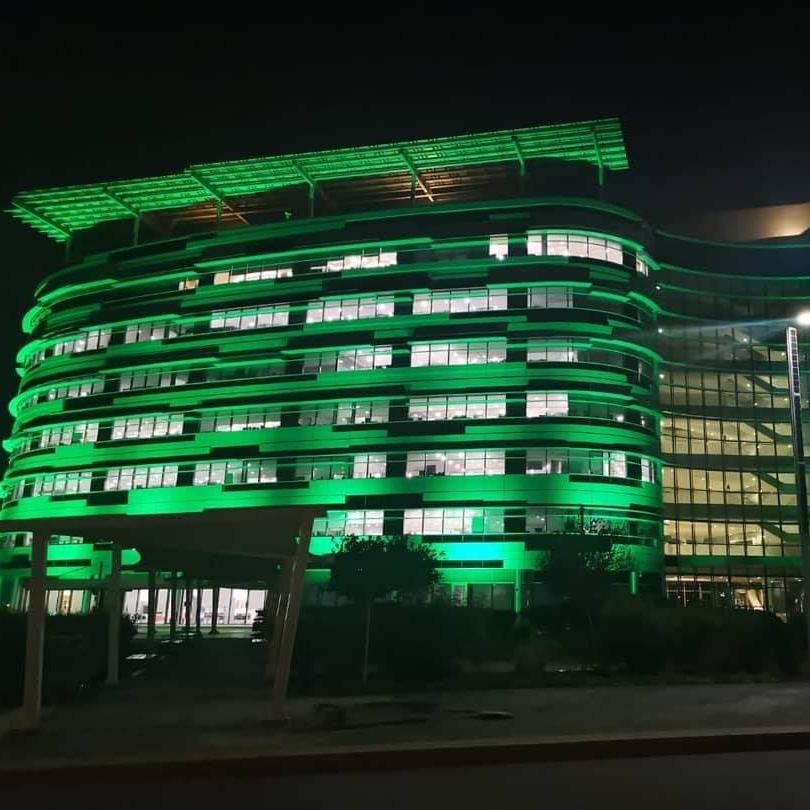
Photo: the headquarters of IRENA, one organization that has promoted green hydrogen, at Masdar City in Abu Dhabi, UAE.
Green hydrogen was little more than a pipe dream just a few years ago. Now, the technology has emerged as an important tool in the global sustainability toolkit. One new development is especially significant in that it demonstrates how the world’s top oil-producing nations can help meet the growing demand for emission-free aircraft fuel.
Leading petroleum exporter wants to lead on green hydrogen economy
Hydrogen is an abundant, ubiquitous industrial feedstock that has many applications in addition to its use as a zero-emission fuel.
Unfortunately, hydrogen does not exist on its own. It must be extracted from hydrogen-rich resources. Currently, the primary source for the global hydrogen supply is fossil natural gas.
So, although hydrogen is a zero-emission fuel, it certainly is not an effective pathway for decarbonization.
That’s where “green” hydrogen comes in. Green hydrogen refers to hydrogen extracted from renewable or reclaimed resources. The main focus of attention in recent years has been on electrolysis, which involves “splitting” hydrogen from water by applying an electrical current.
As a decarbonization strategy, electrolysis makes no sense if the electricity is sourced from fossil power plants. However, the rise of low-cost renewable energy has changed the game — and it just so happens that the coastal oil-producing nations of the Middle East are ripe with water, wind and solar energy.
In the United Arab Emirates, Abu Dhabi has been an early experimenter in the green hydrogen trend through the Masdar energy company and Masdar City urban innovation center. Masdar has already been investing in wind and solar developments to meet skyrocketing demand for clean power in key wind and solar markets including Morocco, Egypt and Jordan. That makes green hydrogen a next logical step.
Planning ahead for the zero-emission aircraft of the future
The new project pairs the Abu Dhabi Department of Energy and Masdar in a memorandum of understanding with the airline companies Etihad Airways and Lufthansa Group, with Khalifa University of Science and Technology, Siemens Energy and Japan’s Marubeni Corporation joining on the research, technology, and financial side.
The collaborative effort will build a demonstration-scale green hydrogen plant at Masdar City to produce fuel for ground transportation and shipping as well as aircraft.
Of particular interest is the broader network of high-stakes collaborators working to transition Abu Dhabi into the green hydrogen economy.
“The project represents the first concrete step under a strategic partnership between Mubadala Investment Company, the sole shareholder of Masdar, and Siemens Energy, intended to accelerate green hydrogen capabilities in Abu Dhabi,” Masdar explains, adding that the effort includes the Abu Dhabi National Oil Company and the Abu Dhabi holding company ADQ as founding members of the Abu Dhabi Hydrogen Alliance.
That type of networking is also at work in the U.S., where the Department of Energy has been supporting a portfolio of renewable hydrogen projects. U.S. manufacturers are also organizing under the Western State Hydrogen Alliance and other consortia.
In other signs of a growing network in the U.S., last fall Mitsubishi spearheaded the launch of the Western Green Hydrogen Initiative, which includes National Association of State Energy Officials, the Western Interstate Energy Board and the Green Hydrogen Coalition (GHC).
Abu Dhabi’s exploitation of its wind and solar resources for green hydrogen also involves deploying its existing fossil infrastructure for green hydrogen. In that regard, it is similar to the dynamic at work in the U.S. For example, the University of Texas is studying how its home state can become the “backbone” of the hydrogen economy in the U.S., with a focus on integrating its state’s vast wind and solar resources into its oil and gas infrastructure.
Putting an end to flight shaming
The partnerships between public sector, private sector, and academic stakeholders are bound to grow as the need for rapid decarbonization becomes more urgent.
That is especially true in the aircraft industry, where the “flight shaming” trend has upped the motivation for commercial customers to cut down on air travel.
Travel will recover after the COVID-19 pandemic eases, but global businesses have already learned how to operate while cutting travel to a bare minimum. To the extent that those lessons learned ripple into the post-pandemic world, airlines will have to work harder to entice commercial customers back on board.
JetBlue and other airlines already have established carbon offsets as a means of countering flight-shaming. A zero-emission fuel would provide them with a new marketing angle that bears directly on their operations.
It won’t be easy. “The decarbonization of aviation remains the most important challenge facing the industry and will require significant investments in efficiency and innovation with a focus on developing technologies to switch to sustainable fuel sources to allow the UAE achieve its CORSIA targets,” explains Tony Douglas, the CEO of Etihad Aviation Group.
Nevertheless, the involvement of top legacy fossil stakeholders indicates that powerful new momentum is building toward the goal of global decarbonization.
Image credit: Masdar/Facebook
Why Reproductive Rights Matter to the U.S. Business Community
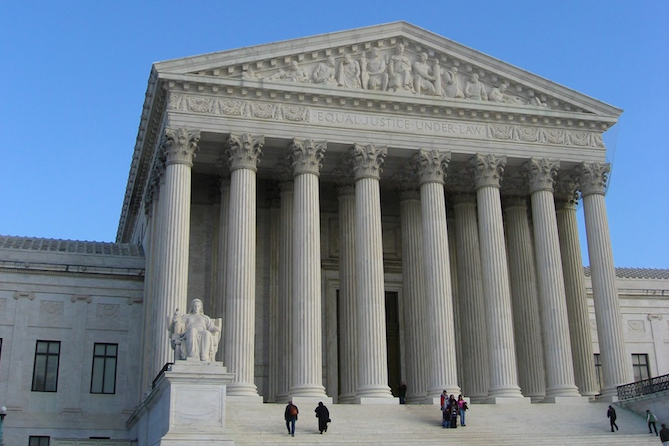

This op-ed on the business case for ensuring reproductive rights was co-written with Ruth Shaber, MD.
The landmark U.S Supreme Court decision Roe v. Wade is celebrating its 48th anniversary this month. If the Supreme Court continues to erode its protections and others related to reproductive rights, the map of abortion availability in the U.S. is certain to change dramatically. Twenty-four states are likely to outlaw abortion entirely. With five states already down to one abortion clinic, millions more women would be living hundreds of miles away from abortion providers.
American corporations should be very concerned.
Recognizing the value that gender diversity brings to performance and profitability, companies have invested millions to attract, develop and retain female talent. Strengthening fertility and maternal health benefits has been one increasingly popular means to this end, continuing an upward trend even during the current economic downturn.
Yet there appears to be scant conversation within the corporate community about strengthening the other end of the reproductive rights spectrum: access to contraception and abortion. This despite the fact that most women, even those who have children or want to conceive at some point, spend most of their reproductive years trying to delay or avoid pregnancy. Ninety-nine percent (99 percent) of all women use or have used birth control during their lives, and nearly 25 percent have had an abortion by age 45. Nearly half of all pregnancies in the U.S. are unplanned.
If Roe v. Wade falls, unplanned pregnancies could force an untold number of women to leave or delay entry into the workforce, limit their participation to part-time work, or forfeit education or training necessary to advance and earn higher salaries. Companies that are working diligently to achieve greater gender parity in their workforces would suffer setbacks that compound the hard-hitting pandemic’s disproportionately harsh impact on the female workforce.
Ironically, corporations will bear some part of the responsibility if this grim scenario plays out. Since the attack on the U.S. Capitol, numerous corporations have rushed to distance themselves from lawmakers who contested the presidential election results. They would be wise to consider making changes to their political contributions criteria that go deeper, or risk further damage to reputation.
A new, first-of-its-kind analysis by the Sustainable Investments Institute examining corporate political spending in the 2020 election cycle paints a dismaying picture of the degree to which leading U.S. companies have supported and enabled anti-choice politicians, party structures and political action committees (PACs). The institute found that Fortune 250 companies’ combined political giving to these recipients amounted to at least $88 million in 2020. Within this total, $17.8 million went to congressional candidates in the South, where 72 percent of recipients held anti-abortion views. Companies gave $12.4 million to anti-choice Midwestern candidates, where the figure was 63 percent.
Fedex is one example. The Sustainable Investments Institute estimates that the company’s total spending to anti-choice recipients amounted to at least $4.2 million in the last three election cycles since 2016. Or its rival, UPS, which spent at least $7.6 million to support anti-choice candidates and political committees in the same period.
Even leading health insurers like Anthem, Cigna, Centene and United Health Group, which insure abortion care, are some of the companies that contributed a combined $2.4 million to the Republic Attorney Generals Association in this period, an important funder of anti-choice legal challenges.
The business community isn’t deliberately setting out to destroy reproductive rights. Comprehensive reproductive healthcare is simply a casualty, like LBGTQ rights, carbon emission reductions and other causes that many companies attempt to address within their own four walls but sell out in the political marketplace.
Since 2019, partnering with over thirty institutional investors including New York City Comptroller Scott Springer, Amalgamated Bank, and the Presbyterian Church USA, Rhia Ventures has interviewed dozens of the nation’s largest companies about their reproductive healthcare benefits and how they are preparing for a possible post-Roe future. Few are thinking about it, let alone what they can possibly do to stop this train in its tracks.
As if reading from a script, every company has told us that their corporate political contributions are made to further narrow business interests and do not imply an endorsement of a politician’s every vote or viewpoint. This rigidity leaves American women working for business leaders who will pay for their eggs to be frozen, but who don’t blink twice before cutting checks to politicians who are working overtime to ban abortion and diminish access to contraceptives and other reproductive rights.
Companies instinctively shy away from taking stands on controversial issues. It wasn’t so long ago that most companies found reasons not to support their LGBTQ employees out of a misplaced fear of perpetual backlash from the religious right - in the 1990s, only a relative handful of Fortune 500 companies provided same-sex domestic partner benefits. But by 2015, 379 companies had signed on to an amicus brief supporting marriage equality. There’s no evidence to indicate that any of them have faced any damage from having taken this stand, nor have there been reports of backlash against any in the business community who have endorsed racial equity in the aftermath of George Floyd’s murder.
Companies who are serious about attracting, retaining and promoting a loyal female workforce don’t need to sit on their hands as the assault on reproductive rights continues. Reproductive rights can be supported by joining in business amicus briefs, lobbying policy makers, making public statements, and at the least, refraining from supporting politicians who are leading the charge against reproductive healthcare. Internally, companies can make the simple decision to reimburse travel costs for employees who need to travel unreasonable distances to obtain abortion or other reproductive healthcare. Companies can’t thrive without women. And women can’t thrive without reproductive healthcare – all of it.
Ruth Shaber, MD, co-author of this article, is the founder and president of the Tara Health Foundation, which promotes health, well-being and opportunity for women and girls through innovative evidence-informed programs. She is also the co-founder and board chair of Rhia Ventures, a group of foundations and investors that collaborate to bring new types of capital and enterprise to the field of reproductive health in the United States.
Image credit: Pxhere
A New Tenant in the White House: Good News for the SDGs?


We haven’t heard much about the United Nations’ Sustainable Development Goals (SDGs) for a while, and it’s clear the global pandemic is one reason. Yet, the SDGs are a reminder of how the COVID-19 crisis cruelly exposed all the hard work that needs to be done worldwide, including curbing poverty, hunger, gender inequality and the climate crisis.
This week, the UN announced it wants to kickstart the drive to ensure all 17 of the SDGs become reality by the end of the decade. That renewed effort, says the UN, relies on the global business community to cement its commitment to sustainable development.
The UN Global Compact (UNGC), the pact tasked with striving to engage businesses to do their part to further environmental and social responsibility, says it’s tweaking its strategy in order to both the Paris Agreement’s goals as well as achieve the SDGs. For now, the three-year strategy focuses on five areas in which businesses can improve.
At the moment, these five points are vague: they include the setting of targets and having businesses hold themselves accountable in meeting those goals; measure impact in five of the 17 SDGs; engage small- and medium-sized enterprises; and more cooperation with the UN and its partners.
Finally, the UNGC is calling for more business cooperation in national and regional networks, with a focus on three regions: the Global South, China and the U.S.
If that last pillar was in part a pointed jab at the U.S. after what had transpired the past four years, well, the UN’s call to recalibrate and double down the SDGs is echoing other voices within the U.S. that have urged the same from the new presidential administration.
Shortly after the November election was called for Joe Biden, the Brookings Institute was one organization that urged the new administration to rewrite the book on diplomacy and global development. Brookings’ suggestions were numerous: Staff USAID to the fullest and lift that agency’s head to cabinet rank; incorporate climate action into just about every U.S. global development policy; and rejoin the World Health Organization (WHO) and the Paris Accords. In summing up those suggestions, the Washington, D.C.-based think tank called for U.S. global development policy to align with the SDGs.
Another group calling for a renewed focus on the SDGs is the Council on Foreign Relations (CFI). Noting that the government of China had embraced the SDGs while the previous administration dismissed them, last month the CFI are an opportunity for the U.S. to score an “entry point” in policies related to education, health and technology – for both foreign and domestic policy.
If the Biden administration can succeed at accelerating vaccinations to the level at which it promised the American public – which would signal that the country is finally emerging from the pandemic – the results include a newly repaved path for the SDGs. Assuming yesterday’s inauguration festivities, which emphasized “unity,” resonates with both citizens and the companies for which they work, we could see a reenergized commitment to the SDGs. After being urged the last four years to lead, the business community may finally breath a sigh of relief and become engaged to follow a plan. The outcome would mean far more that the reappearance of those shiny SDG lapel pins; it means a more unified, clear way to measure progress on those global goals, as well as a framework to help keep businesses, and governments, accountable.
Image credit: Sgt. Charlotte Carulli/Wiki Commons